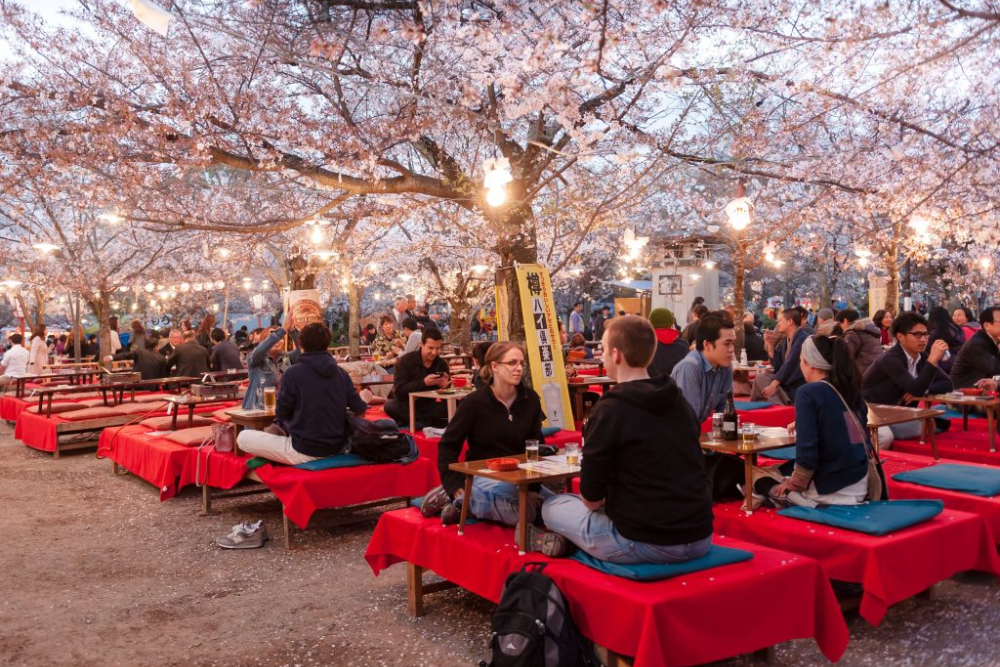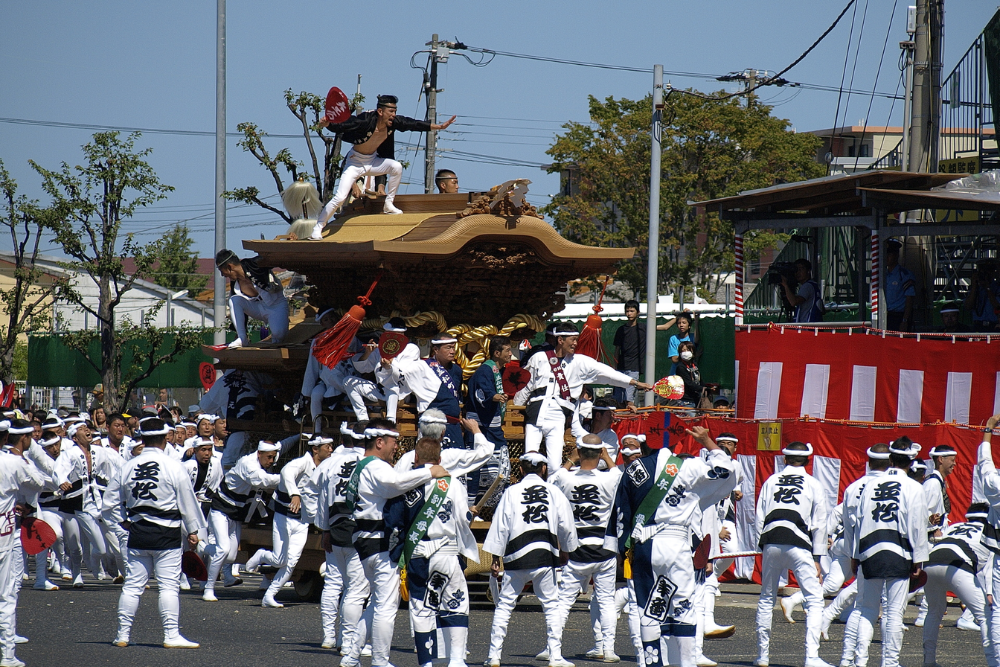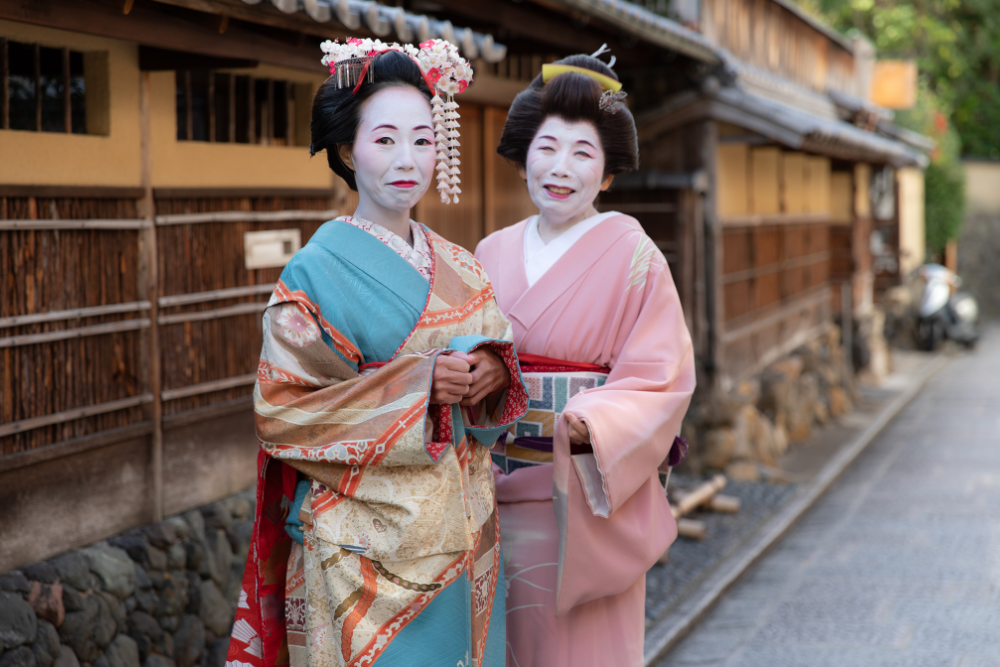Japan is renowned for its seasonal festivals, known as matsuri, which celebrate everything from cherry blossoms to historical events and local traditions. Whether you visit in spring, summer, autumn, or winter, there is always a festival taking place somewhere in the country.
This guide highlights the best seasonal festivals in Japan’s cities, offering an opportunity to experience traditional performances, street food, and cultural celebrations.
Spring Festivals (March – May)
Spring in Japan is marked by cherry blossom celebrations, historical processions, and vibrant street events.
1. Hanami (Cherry Blossom Viewing) – Nationwide
- Where: Tokyo (Ueno Park, Shinjuku Gyoen), Kyoto (Maruyama Park), Osaka (Osaka Castle Park)
- When: Late March – Early April
- Why Go? Join locals for a picnic under cherry trees, enjoying seasonal foods and sake.
2. Takayama Spring Festival – Takayama
- Where: Takayama, Gifu Prefecture
- When: April 14–15
- Why Go? One of Japan’s most beautiful festivals, featuring ornate, centuries-old floats parading through this well-preserved historic town.
3. Aoi Matsuri – Kyoto
- Where: Kyoto (Shimogamo Shrine & Kamigamo Shrine)
- When: May 15
- Why Go? A grand procession of participants dressed in Heian-era costumes, recreating an ancient imperial court ceremony.
Summer Festivals (June – August)
Summer in Japan is the season of fireworks, lively processions, and traditional dance performances.
4. Gion Matsuri – Kyoto
- Where: Downtown Kyoto
- When: Entire month of July (Main events: July 17 and 24)
- Why Go? Kyoto’s largest festival, featuring elaborate floats pulled through the streets, along with street food and cultural performances.
5. Tenjin Matsuri – Osaka
- Where: Osaka (Tenmangu Shrine, Okawa River)
- When: July 24–25
- Why Go? One of Japan’s most renowned festivals, known for its boat procession on the Okawa River and spectacular fireworks display.
6. Nebuta Matsuri – Aomori
- Where: Aomori City
- When: August 2–7
- Why Go? A visually striking event with enormous illuminated warrior floats, taiko drumming, and dancers in traditional costumes.
7. Sumidagawa Fireworks Festival – Tokyo
- Where: Sumida River, Tokyo
- When: Last Saturday of July
- Why Go? One of Japan’s largest fireworks displays, best viewed from Asakusa or along the riverbanks.
Autumn Festivals (September – November)
Autumn in Japan brings harvest celebrations, historical reenactments, and vibrant seasonal landscapes.
8. Kishiwada Danjiri Matsuri – Osaka
- Where: Kishiwada, Osaka
- When: Mid-September
- Why Go? A thrilling festival featuring massive wooden floats pulled through the streets at high speed by energetic teams.
9. Jidai Matsuri – Kyoto
- Where: Kyoto (Heian Shrine)
- When: October 22
- Why Go? A grand historical parade showcasing over a thousand years of Kyoto’s history, with participants dressed in samurai, court, and Edo-period attire.
10. Takayama Autumn Festival – Takayama
- Where: Takayama, Gifu Prefecture
- When: October 9–10
- Why Go? Featuring exquisite float processions, lantern-lit evenings, and intricate puppet performances, this festival is considered one of Japan’s most beautiful.
Winter Festivals (December – February)
Winter in Japan offers illuminations, snow sculptures, and traditional New Year celebrations.
11. Sapporo Snow Festival – Sapporo
- Where: Sapporo, Hokkaido
- When: Early February
- Why Go? Japan’s most famous winter festival, featuring massive ice and snow sculptures, night illuminations, and snow slides.
12. Chichibu Night Festival – Chichibu (Near Tokyo)
- Where: Chichibu, Saitama Prefecture
- When: December 2–3
- Why Go? A winter counterpart to Kyoto’s Gion Matsuri, this festival features illuminated floats, fireworks, and traditional performances.
13. Yokote Kamakura Festival – Akita
- Where: Yokote, Akita Prefecture
- When: Mid-February
- Why Go? Experience kamakura, or traditional snow huts illuminated from within, creating a serene winter landscape.
Conclusion
Japan’s seasonal festivals offer a deep connection to its cultural heritage and traditions. Whether watching fireworks over the Sumida River in summer, witnessing Kyoto’s Jidai Matsuri in autumn, or exploring the Sapporo Snow Festival in winter, each season provides an opportunity to experience a different side of Japan.
Timing a visit around a festival enhances any trip, offering a unique chance to engage with Japan’s vibrant traditions, local cuisine, and historical celebrations.












